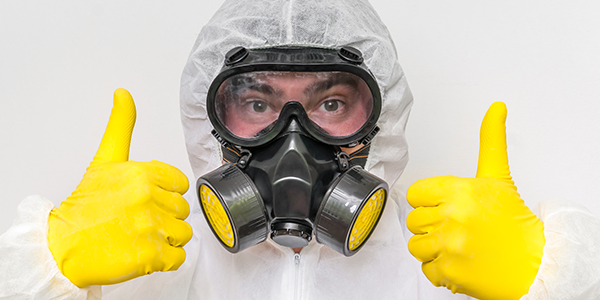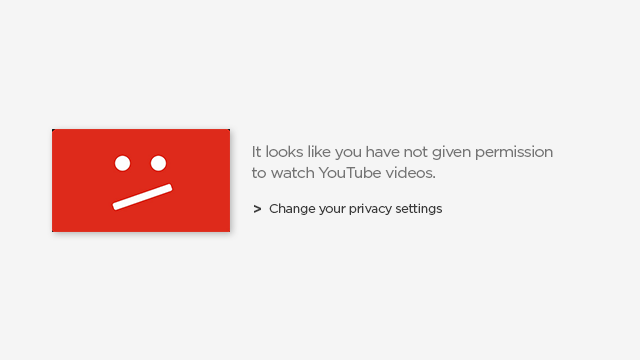
Do you want healthy employees? Of course you do! That is why adjusted respiratory protection is of great importance.
A face mask with a perfect fit and a proper seal for every employee. This is the dream of every safety expert or prevention advisor. Unfortunately, no one has yet succeeded in developing this unique product.
Dust and gas filters are doing their best to protect you from incoming particles, but if your mask does not seal properly, it is pointless to wear a mask.
Fortunately, there is a test to see to how well a face mask fits, and how efficiently it protects against inward leakage.
This test is called a face fit test.
In this article we will discuss all the aspects and how the test works.
- What is a face fit test?
- Which respiratory protection equipment can you have tested?
- Nine checks for the test
- How does a face fit test work?
- Is a face fit test mandatory?
- When do you have to take a fit test?
What is a face fit test?
Air always follows the path of least resistance. When a mask does not fit your face correctly, contaminated air can penetrate more easily through minuscule openings.
A face fit test checks whether a tight-fit respirator (dust mask, half-face mask or full-face mask) fits the user's face correctly.
It is also an ideal way to train your employees in the correct way to put on and take off a face mask.
In order to guarantee the quality standards, it is important to choose a recognised organisation to carry out these tests.
Which respiratory protection equipment can you have tested?
All tight-fit respiratory protection equipment can be face fit tested. These are dust masks, half-face masks and full-face masks with filters against dust or gases.
You can also have tight-fit respiratory protection connected to fresh air systems or compressed air (compressed air bottles or compressed air network) tested.
Since the test checks the mask's seal, it would make no sense to have loose-fit respiratory protection equipment such as air caps tested.
Procedure before the test
Below, you will find a checklist of nine issues that you should definitely tick off before you can schedule a fit test.
This will ensure that the fit test can be carried out without any problems.
1. Choose different respiratory protective equipment that will protect your colleagues depending on the work they need to do.
2. Make sure that those who are to be tested are clean-shaven, and that no clothing or jewellery can cause an obstruction.
3. Ensure that the user is wearing all their personal protection equipment or workwear that he or she would normally wear in the workplace, as this could affect inward leakage.
4. Show the user how to put a mask on and take it off correctly. Taking the mask off is just as important as putting it on. If a user was to feel unwell during the test, you wouldn't want them to rip out their hair in their haste to remove the mask.
5. Ask if the mask fits well and is comfortable to wear. If this is not the case, it is best to try a different mask straight away.
6. Have the user assess the comfort and fit of the mask: sufficient space for eye protection - easy to talk - good fit around the nose, chin and jaw - mask not slipping,...
7. Have the user check whether s/he thinks the mask seals properly.
8. If the user experiences breathlessness, stop the fit test immediately and refer him/her to a doctor.
9. Explain to the person being tested what a face-fit test entails, and what exercises s/he will need to carry out.
Check? Let’s get started with the test!
How does a face fit test work?
There are two ways to take a face fit test:
- The qualitative method (QLFT): a rather subjective test method based on the user's feedback.
- The quantitative method (QNFT): an objective test method resulting in a fit factor.
These two methods have different procedures and exercises which determine whether your face mask maintains its seal while you make certain movements.
Qualitative face fit test

The qualitative face fit test is the subjective test. The wearer provides feedback by using their sense of taste.
This method is mostly used to test dust masks or half-face masks.
During this test, the user wears the respiratory protection equipment and is given a huge head cover above the head.
A recognised fitness tester sprays a sweet (Saccharin) or bitter (Bitrex) substance into the hood, which the user either will or won't be able to taste. This test is also called the "bitter/sweet test".
Next, the user carries out seven (eight in the OSHA protocol) body movements, each for about 1 minute:
- Breathe normally.
- Take deep breaths.
- Move head back and forth.
- Move head up and down.
- Bend forward from the waist.
- Read or talk out loud.
- Breathe normally again.
If the user does not taste anything, the test has been passed and this respirator can be used in his/her work.
If the result is negative, then another mask must be found that provides a better fit and protection.
Quantitative face fit test

A quantitative face fit test is objective, and is commonly used to test tight fit respiratory protection.
During this test, an authorized fit tester measures the inward leakage around the face using a special device.
There are several methods, but the most common one is the TSI PortaCount. This device measures the concentration of dust particles inside and outside the mask (in cm³). This ratio gives a fit factor.
Another method is the OHD Quantifit which uses controlled underpressure.
During this test, the user must also perform seven (or eight) body movements, each for 1 minute.
The result of all the exercises is an overall personal fit factor (average of each exercise) that provides insight into the extent to which a respirator fits around the user's face. During the test, the device measures the fit factor in real time.
Example
The concentration outside a full-face mask is 2000 and inside the mask 2. The fit factor is then 2000 / 2 = 1000. This means that the air in your mask is 1000 times purer than outside the mask.

Do not mistake this for the NPF (Nominal Protection Factor) or APF (Assigned Protection Factor). A fit factor is only the result of the test at a specific moment. The NPF and APF are used to choose a respirator.
If the tested fit factor is below the required fit factor, you need to find a different respirator for this person.
Do not try to overprotect your employees by demanding an unusually high fit factor. The respirator should be as comfortable as possible for the user to wear.
Is a face fit test mandatory?
At this moment, there is no official European legislation that requires companies to conduct a face fit test.
You will find a recommendation in the NEN-EN 529:2005 standard (Recommendation, use and maintenance of respiratory protective equipment) but national regulations determine whether or not the test is mandatory.
- In Belgium, a face fit test is not mandatory, but it is recommended.
- In the Netherlands and France, a fit test is only mandatory for companies that carry out the removal of asbestos.
- In Great Britain, the test is mandatory and the HSE 282/28 protocol is used.
- In the United States, it is mandatory and the OSHA 1910.134 protocol is applied.
In countries where there is no official regulation, it is recommended to use the OSHA or HSE protocol.
| testing method | |||||
|---|---|---|---|---|---|
| Qualitative | Quantitative (PortaCount) | Quantitative (Quantifit) | |||
| Compatible? | Compatible? | Minimum fit factor | Compatible? | Minimum fit factor | |
| Dust masks |
HSE: Yes OSHA: Yes |
Yes |
HSE:100 OSHA: 100 |
No | - |
| Half face mask |
HSE: Yes OSHA: Yes |
Yes |
HSE:100 OSHA: 100 |
Yes |
HSE:100 OSHA: 100 |
| Full face mask |
HSE: Yes OSHA: Yes |
Yes |
HSE: 2000 OSHA: 500 |
Yes |
HSE: 2000 OSHA: 500 |
Conclusie
Choosing the right respiratory protection equipment is one thing.
Finding the correct and personal fit for your employees is another matter.
Although face-fit tests are not mandatory in Belgium, we strongly recommend that wearers of tight-fit respiratory protection are tested every year.
Even the smallest opening allows contaminated particles to enter the mask. Leakage of half a percent along the mask already corresponds to 10 times more impure air.





